 Perma-Chink Systems, Inc
Log & Timber Home Care Experts
Perma-Chink Systems, Inc
Log & Timber Home Care Experts
By Seth Murphy
Homeowners almost always have a list of projects to complete around the house. If interior projects are on your list, don’t let winter slow your progress. The truth is, there are several indoor maintenance projects that are ideal for winter.
How about EuroPlast?
Looking for just the right compliment to enhance the interior walls of your dream home? Consider the ageless appeal of Venetian plaster. For centuries architects, designers, builders, and owners alike have marveled at the splendor of this highly popular form of wall surfacing, and throughout the ages the artisans who were skilled at creating such beauty have been revered and sought after. With today’s advanced technology, you can now have this distinctive elegance and appeal at a fraction of the cost- in as little as two days.
 If you live in or near the woods, you probably have a variety of rodents that also occupies your surrounding area. Most rodents like to gnaw on wood and if your log home is accessible to them it may become the target of their gnawing activity. Although field mice occasionally work on the exterior of a home, most of their effort is devoted to finding a warm place to spend the winter. If you seal up all of the potential entrance points, especially around the foundation, you will prevent their taking up residence inside your home. Just remember that they can squeeze through unbelievable small openings so you need to do a thorough job.
If you live in or near the woods, you probably have a variety of rodents that also occupies your surrounding area. Most rodents like to gnaw on wood and if your log home is accessible to them it may become the target of their gnawing activity. Although field mice occasionally work on the exterior of a home, most of their effort is devoted to finding a warm place to spend the winter. If you seal up all of the potential entrance points, especially around the foundation, you will prevent their taking up residence inside your home. Just remember that they can squeeze through unbelievable small openings so you need to do a thorough job.
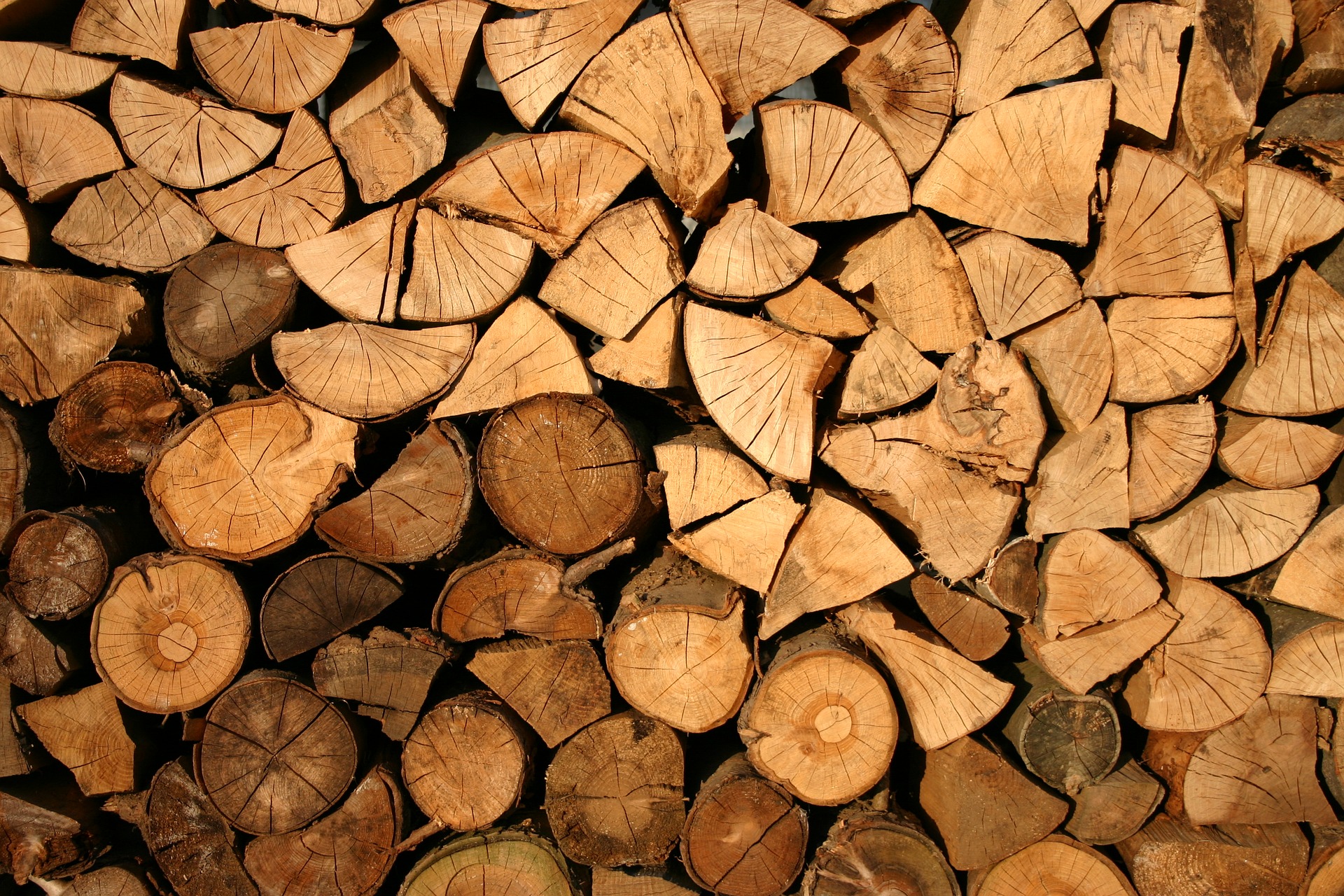 During the winter months many homeowners use firewood as a source of heat or create an attractive atmosphere. But along with the firewood comes many types of living pests. Most firewood pests will not harm people or animals, nor will they start infestations of wood within the home.
During the winter months many homeowners use firewood as a source of heat or create an attractive atmosphere. But along with the firewood comes many types of living pests. Most firewood pests will not harm people or animals, nor will they start infestations of wood within the home.
However, there are a few pests, like Black Widow spiders, that are of concern. Some types of wood boring beetle infestations occasionally begin by emerging from stored firewood. But most pests are harmless, yet annoying, insects like cockroaches, pillbugs, centipedes, ground beetles, and sowbugs that all like to hide over winter beneath bark, or in the cracks of firewood, becoming active within days after the firewood is brought into a warm home.
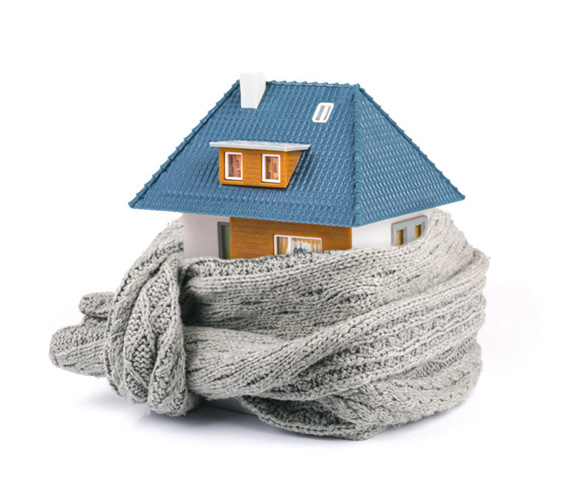
By Seth Murphy
Papadiy.com
Owning a home is a big part of the American Dream: a place to call home, where your family grows and thrives. Being a homeowner however, has its fair share of responsibilities and it’s a year round job. As you prepare for winter and ice storms, there are a few must do’s to ensure your family’s peace of mind. Every homeowner is inevitably faced with the possibility of having to hire a professional to do home repairs and maintenance. However, there are plenty of DIY maintenance tips that can keep your house in tip top shape so you can save the most complicated jobs to the professionals.
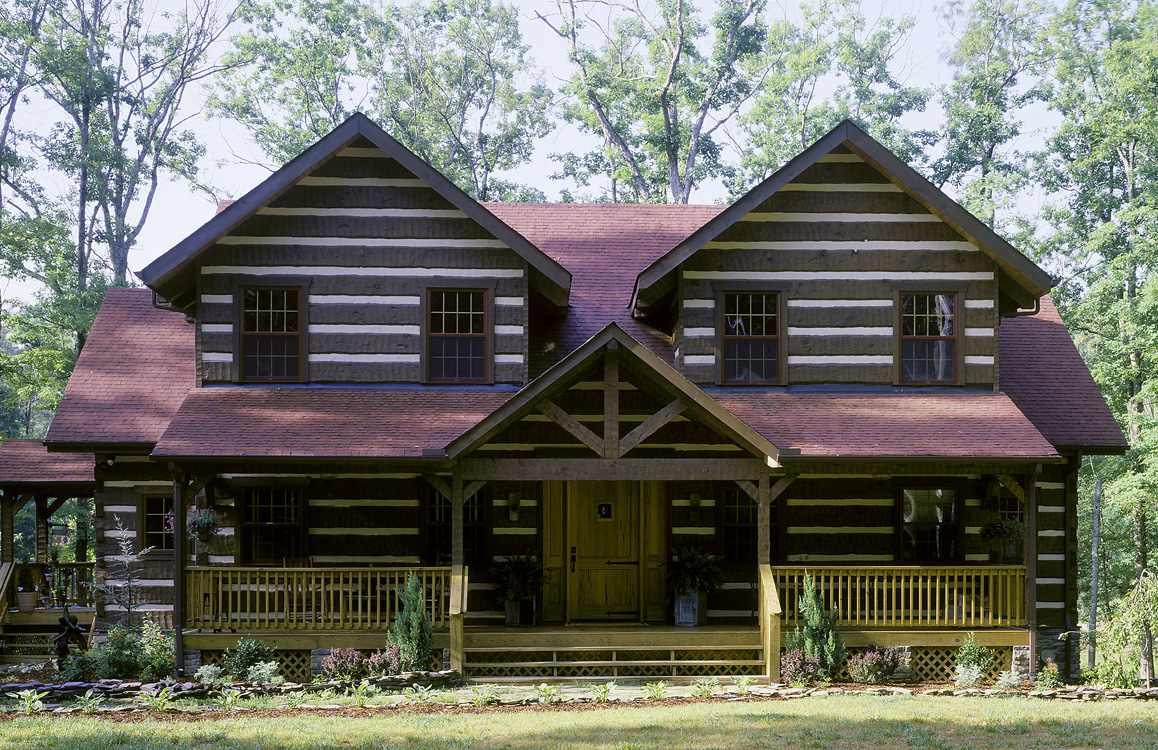
Is Chinking Cosmetic or a Sealant?
Perma-Chink has evolved into an elastomeric compound that has been specifically designed for use in log home sealing applications. Perma-Chink adds to the overall integrity of the structure by not only preventing water and air from entering the home, but also adding greatly to the overall effectiveness of the entire building envelope - keeping heat and air from escaping during the heating and cooling seasons. While it looks fantastic when properly applied, Perma-Chink is most definitely a sealant first and a cosmetic product second.
It should also be mentioned that a properly applied chinking compound will help keep out unwanted insects and other nuisance pests. In the case of a “chinkless” style home, many homeowners often desire to add a chink line for cosmetic purposes to differentiate the home from a smooth-sided home. Or oftentimes on a full log wall system Perma-Chink is used as a contrast in the color of the chosen finish.
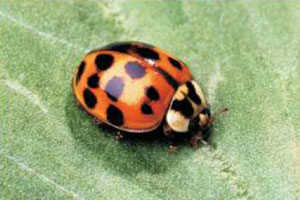
In many areas of the country when cool, fall days arrive, Asian lady beetles (ladybugs), Harmonia axyridis, and boxelder bugs, Boisea trivittatus, congregate on exterior walls. They typically choose the south and west facing walls since these walls are the warmest. Once on the wall they look for nooks, crannies and other dark openings where they can hibernate over the winter. Log checks, gaps between butt joints and corner openings provide ideal wintering sites for these insects. If any opening leads to the inside of the home, they can become a real nuisance, especially if they enter in large numbers. An effective method to handle them inside is with a vacuum cleaner. Spraying them with pesticides is unnecessary and unhealthy.
The best way to keep them out of your home is to block their entry points with a sealant, screening and weather stripping. Using high quality sealants like Energy Seal™ or Woodsman™ will help prevent these and other insects from entering your home for years to come. When sealing, pay special attention to window and door frames. That's where openings typically appear as a home settles and logs season.
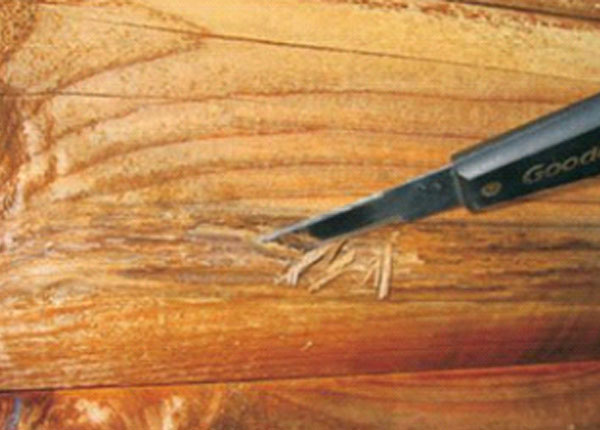 More wood is replaced each year because of decay damage than all other factors combined! Commonly called rot, wood destroying fungi need three things to survive: air, water, and food. Since we can't eliminate air and their food is the wood in our homes, the only mechanical control mechanism available to us is the elimination of water. Water is the enemy of wood! Although we've all heard the term "dry rot," dry wood will not rot!
More wood is replaced each year because of decay damage than all other factors combined! Commonly called rot, wood destroying fungi need three things to survive: air, water, and food. Since we can't eliminate air and their food is the wood in our homes, the only mechanical control mechanism available to us is the elimination of water. Water is the enemy of wood! Although we've all heard the term "dry rot," dry wood will not rot!
There are three basic categories of wood-destroying fungi: soft rot, brown rot and white rot. Soft rot fungi are typically found in wet wood showing the first signs of decay. Wood infected with soft rot can become quite soft and spongy. Other than the softness of the wood and perhaps discoloration of the surface, there may be no apparent signs of a soft rot infestation.
Have you noticed your heating bill increasing year after year? It could be that your home has cracks that let heat escape, costing you money. Seal up cracks and seams before the weather turns cold and it’s too late to do anything about it.
Specifically designed for milled and scribed log homes, Energy Seal is a revolutionary product offering superior binders that effectively seal all interior and exterior gaps and cracks.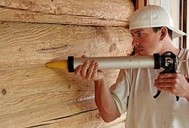
Energy Seal is a 100% acrylic polymer sealant formulated to provide a long-lasting and resilient barrier for any chinkless log home. Since logs constantly twist, turn, swell, and shrink during the life of a log home, annoying gaps can appear. These gaps promote the retention of moisture, which can lead to log decay and damage, as well as seepage of air and water.
All About Linseed Oil - And Why It's No Good For Wood
We occasionally get calls about the exterior of a home that has turned black.
Almost without fail it's the result of using an oil-based stain that contained linseed oil.

Linseed oil is a yellowish oil derived from the dried seeds of flax plants, and is also known as flax seed oil. Linseed oil is used as a carrier in many brands of oil-based paints and stains. Since linseed oil is organic, many varieties of mold fungi thrive on it. Over time mold can proliferate to point where the coated surface can turn dark brown to black. One way to tell if the darkening is due to mold rather than UV damage is inspecting areas protected from direct sunlight like under eaves and overhangs; it will be the same dark color as the rest of the wall.